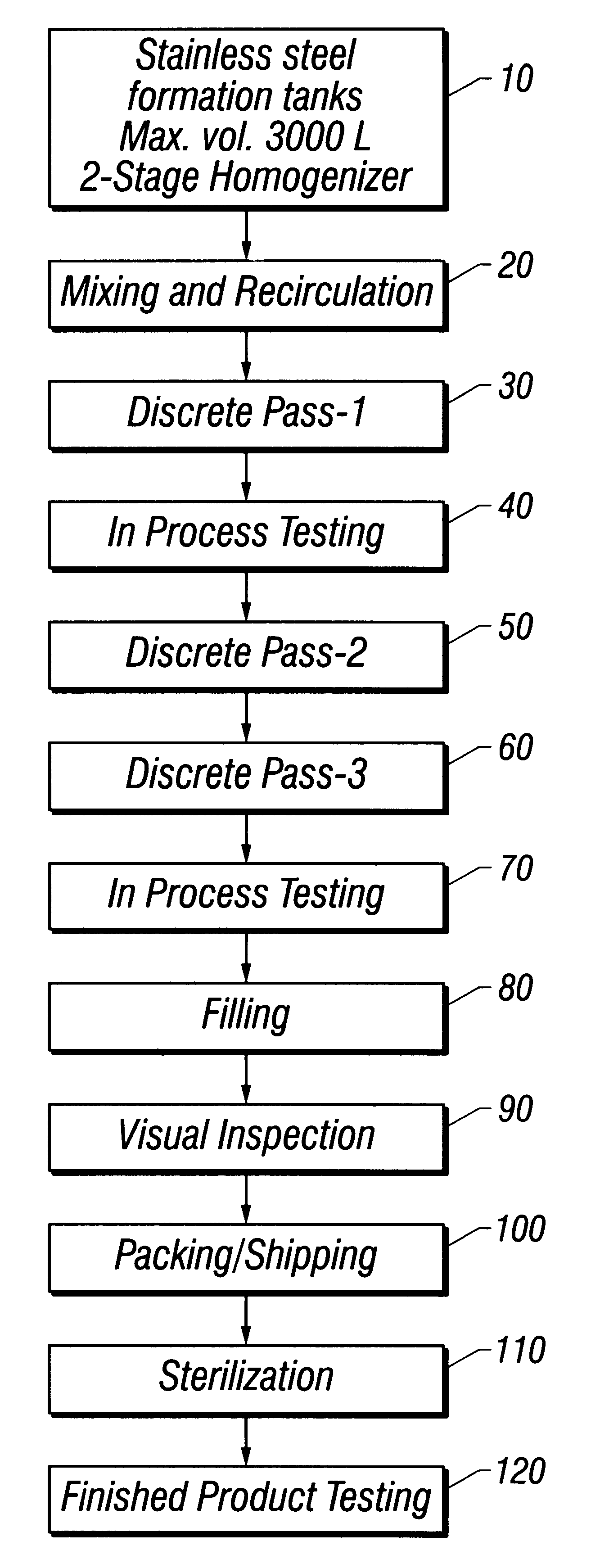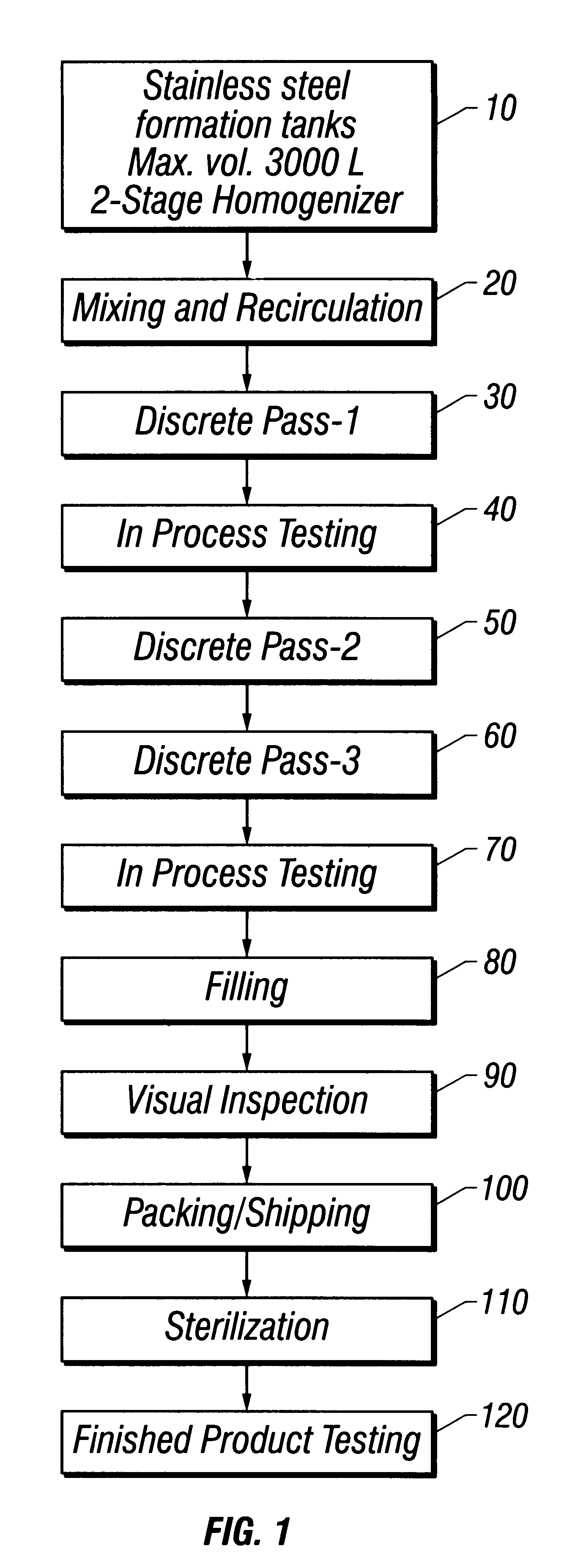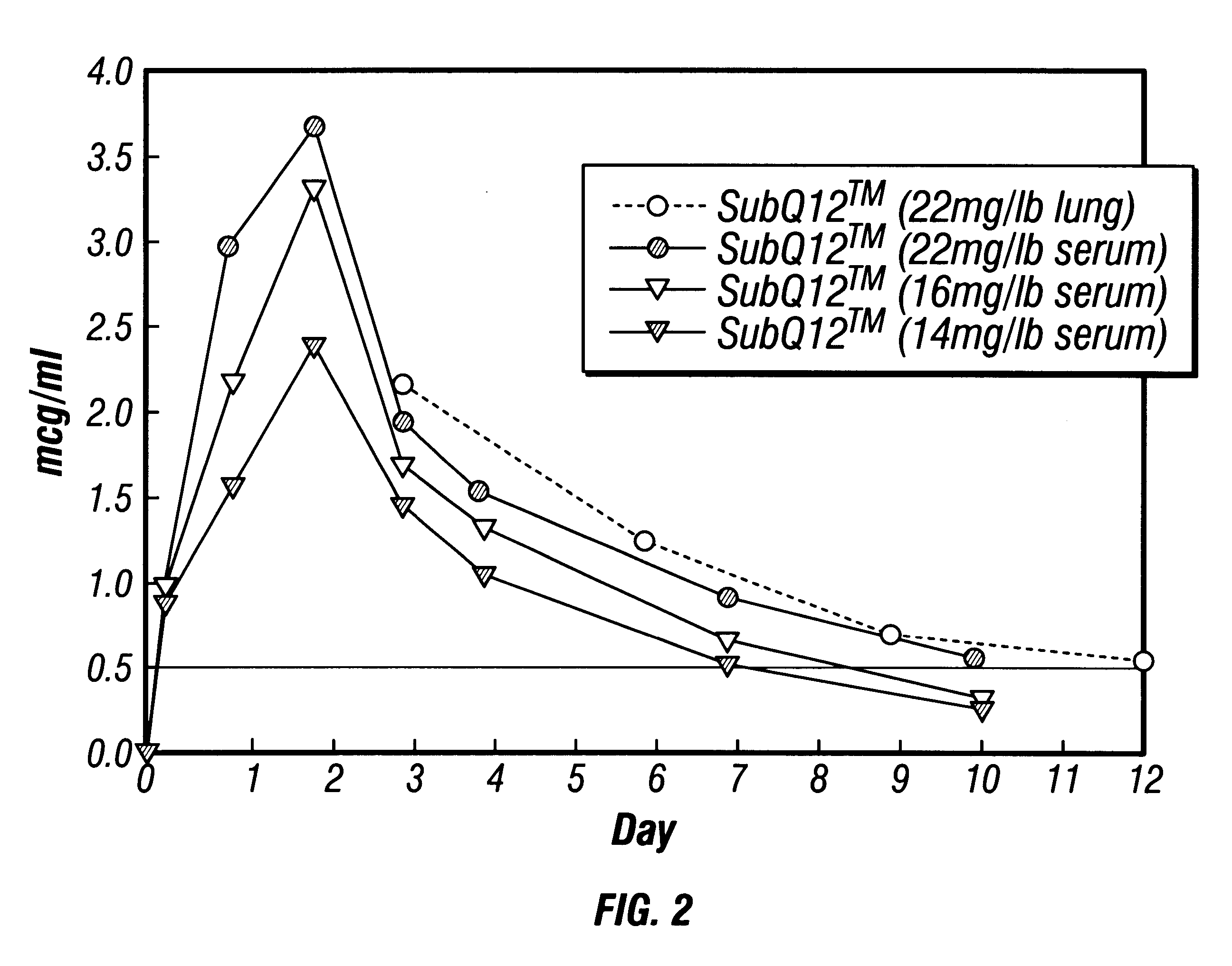Phospholipid-coated microcrystals for the sustained release of pharmacologically active compounds and methods of their manufacture and use
a phospholipid-coated microcrystal and pharmacologically active technology, applied in the field of microcrystal technology, can solve the problems of significantly longer sustained release times of phospholipid-coated microcrystals than those of the prior, and achieve the effects of longer release times, sustained release times, and longer release times
- Summary
- Abstract
- Description
- Claims
- Application Information
AI Technical Summary
Benefits of technology
Problems solved by technology
Method used
Image
Examples
example 2
This example illustrates the method whereby microcrystals containing oxytetracycline were prepared.
The formula for making the microcrystals was as follows:
Referring to FIG. 1 throughout this example, water for injection (WFI) USP, was added to a 3,000 L stainless steel formulation tank to approximately 40% of target final tank batch volume at a temperature of not more than 32.degree. C. (10). Mannitol USP was added and the ingredients mixed until the mannitol dissolved. WFI was then added to 45% of final tank batch volume, and the solution mixed for at least 10 minutes. Mannitol was tested for and whenever necessary, increments of mannitol or WFI were added to achieve a final mannitol concentration of 2.25% (w / v). Suspension recirculation was then initiated (20).
Methylparaben NF, propylparaben NF, phospholipids syrup (see Example 1), and oxytetracycline were added with continuous recirculation. The solution was mixed for a minimum of 30 minutes until the suspension appeared to be cr...
example 3
This example illustrates the injection of various dosages of microcrystals containing OTC into cattle and the levels of OTC achieved in serum and lung tissue. Sustained release of OTC and tissue residue depletion data are also illustrated.
A sample of an oxytetracycline microcrystal suspension was manufactured in accordance with Example 2, and potency was measured at 250 mg / ml. Suspension formulation dosages of 22 mg / lb animal weight, 16 mg / lb, and 10 mg / lb were subcutaneously injected into healthy beef cattle which weighed from 734-764 lbs. FIG. 2 shows the mean serum and lung tissue concentrations of OTC as a function of time. The OTC blood concentrations reached peak levels of 3.7 ppm at 54 hrs. Depletion rates appeared fairly similar among the dosage levels. Even at 10 days post-dose there were relatively significant serum OTC concentrations; 0.2, 0.3 and 0.6 ppm for the 10, 16 and 22 mg / lb dosages, respectively.
We also examined tissue residue depletion of OTC administered subcut...
example 4
Use of Oxytetracycline Microcrystals in Horses
This example illustrates that microcrystals containing 25% oxytetracycline were safely injected into horses at a dosage as high as 16 mg / lb.
While oxytetracycline is commonly used to treat Potomac fever in horses, the administration of OTC in horses presents the danger of killing the animal if the drug is administered too quickly, as OTC may interact with and lyse the white blood cells and cause severe shock in the animal. Therefore, there exists a need for a safer mode of administering medications of this type to horses and other mammals.
25% OTC microcrystals were injected subcutaneously and intra-muscularly into healthy horse. This was found to cause temporary sore muscles in the horses, but no other adverse effects were observed. Therapeutic levels of OTC will be observed for up to 10 days.
25% OTC microcrystals were also administered intravenously into horses at a dose of 14 mg / lb. No adverse effects were observed with this mode of adm...
PUM
| Property | Measurement | Unit |
|---|---|---|
| diameter | aaaaa | aaaaa |
| diameter | aaaaa | aaaaa |
| diameter | aaaaa | aaaaa |
Abstract
Description
Claims
Application Information
 Login to View More
Login to View More - R&D
- Intellectual Property
- Life Sciences
- Materials
- Tech Scout
- Unparalleled Data Quality
- Higher Quality Content
- 60% Fewer Hallucinations
Browse by: Latest US Patents, China's latest patents, Technical Efficacy Thesaurus, Application Domain, Technology Topic, Popular Technical Reports.
© 2025 PatSnap. All rights reserved.Legal|Privacy policy|Modern Slavery Act Transparency Statement|Sitemap|About US| Contact US: help@patsnap.com



